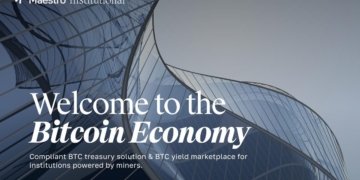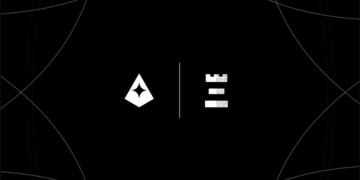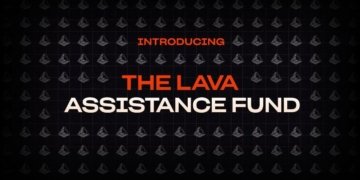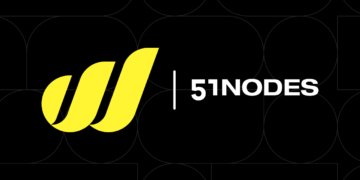
Ethereum’s 2025 Evolution: Embracing Future Innovations Today
As we stand on the precipice of blockchain innovation, Ethereum continues to lead the charge into the future. Ethereum’s 2025 evolution promises significant upgrades that aim to tackle current limitations while exploring new possibilities within decentralized ecosystems. Join us as we explore the developments that Ethereum enthusiasts and the wider digital world can expect as we approach 2025.
The Current Landscape: Ethereum’s Journey So Far
Ethereum revolutionized the blockchain scene with the introduction of smart contracts and decentralized applications (dApps). Since its launch in 2015, Ethereum has:
- Become the second-largest cryptocurrency by market capitalization.
- Hosted thousands of innovative dApps and DeFi projects.
- Initiated the transition to Ethereum 2.0, significantly reducing its environmental impact.
Yet, the foundation of Ethereum’s future lies in addressing its current challenges, including scalability, security, and sustainability.
Scalability: Eth2 and Beyond
One of the primary focuses of Ethereum’s evolution is improving its scalability. The network has encountered limitations with transaction throughput, leading to congestion and high gas fees. By 2025, Ethereum plans to address these through several innovations:
Shard Chains
Ethereum 2.0 sets the stage with shard chains, a multi-phase plan designed to increase Ethereum’s capacity. Sharding enhances throughput by enabling the parallel processing of transactions across different chains. This approach aims to significantly reduce transaction costs and enhance network speed.
Rollups
Another scalability solution comes in the form of rollups. Rollups are layer-two solutions that bundle numerous transactions and offload computation off-chain, while staying secure through on-chain data availability. By further implementing rollups, Ethereum can confine its chain data and boost its capacity without sacrificing security or decentralization.
Security: Fortifying the Ethereum Network
The Ethereum network’s security remains paramount as it evolves. With the vast array of dApps and smart contracts running on the platform, potential vulnerabilities must be addressed vigilantly.
Upgraded Staking Mechanisms
In the evolution towards Ethereum 2.0, staking has become an essential factor in securing the network. Through proof-of-stake (PoS) consensus, validators are incentivized to secure the network by staking Ethereum tokens. By fine-tuning these mechanisms, Ethereum can ensure that the network remains resilient against attacks while maintaining decentralization.
Advanced Smart Contract Tools
As smart contracts witness increased adoption, the need for sophisticated auditing and security tools grows. In Ethereum’s future vision, the development of advanced toolkits and frameworks is emphasized to ensure that developers can create resilient and secure smart contracts with ease.
Sustainability: Moving Towards a Greener Tomorrow
With the transition to PoS, Ethereum has already made substantial strides in reducing its carbon footprint compared to its earlier proof-of-work (PoW) model. However, sustainability extends beyond energy consumption.
Eco-Friendly dApp Development
Developers on Ethereum are encouraged to innovate with sustainability in mind. This involves creating applications focused on decreasing on-chain storage needs, enhancing resource optimization, and promoting greener practices within the blockchain industry.
The Future of Financial Systems: Ethereum’s Role in DeFi
With decentralized finance (DeFi) reshaping global financial systems, Ethereum’s role remains critical. By 2025, we can expect Ethereum to make several strides in this realm:
Interoperable Finance Platforms
The seamless integration of different DeFi platforms and traditional finance systems is anticipated. As Ethereum expands into cross-chain solutions, it sets the stage for a interconnected global financial ecosystem, making financial services accessible to a broader audience.
Enhanced User Experience
Ethereum developers are focusing on improving the user experience and interface of DeFi applications. By simplifying interfaces and abstracting complex blockchain processes, more individuals can confidently engage with DeFi, democratizing finance and bringing more users into the Ethereum fold.
Preparing for Ethereum’s Future: Community and Development
The community-driven ethos of Ethereum plays a significant role in its evolution. By investing in research, development, and community engagement, Ethereum looks to build a robust future, empowered by its global community.
Continuous Developer Engagement
Through initiatives like hackathons, Ethereum incentivizes developers to continue building on its platform, enriching the ecosystem with fresh ideas, applications, and solutions. This commitment ensures a vibrant, constantly evolving ecosystem.
Community-Led Governance
The decentralized governance model of Ethereum places decision-making power in the hands of its users and stakeholders. By embracing this approach, the Ethereum community can spearhead inclusive and strategic decisions that align with everyone’s best interests.
Conclusion: A Promising Horizon for Ethereum
As Ethereum marches towards 2025, its roadmap is lined with remarkable innovations that promise to shape the future of blockchain technology and decentralized finance. With an unwavering commitment to scalability, security, and sustainability, Ethereum continues to stand as a beacon for an open, decentralized digital future.
**Embrace the future today**—stay informed and engaged with the ongoing developments within the Ethereum ecosystem, and be a part of this transformative journey.
“`


















